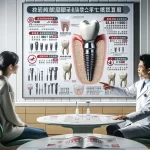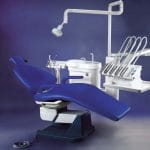In the ever-evolving world of modern dentistry, patient comfort and safety are at the forefront of innovation. Among the essential tools that enhance these aspects are bite blocks, which play a critical role in various dental procedures. This guide explores the significance of bite blocks, their types, proper usage, and how they contribute to a positive dental experience for patients.
What Are Bite Blocks?
Bite blocks, also known as mouth props or dental blocks, are devices designed to keep a patient’s mouth open during dental treatments. These simple yet vital tools serve multiple purposes:
- Enhanced Access: They provide dentists with better visibility and access to the oral cavity.
- Protection: Bite blocks protect both the patient’s soft tissues and dental instruments from accidental harm.
As dental procedures become increasingly complex and patient-centric, the importance of bite blocks has grown significantly.
The Importance of Bite Blocks
Ensuring Patient Comfort
One of the primary functions of bite blocks is to enhance patient comfort during lengthy dental procedures. By providing stable support to keep the mouth open, bite blocks help reduce muscle fatigue in the jaw. This support allows patients to relax their facial muscles, minimizing discomfort and potential soreness after treatment.
For individuals with temporomandibular joint (TMJ) disorders or anxiety about dental visits, bite blocks offer a sense of security by preventing involuntary jaw closure and alleviating concerns about accidentally biting down.
Enhancing Safety During Dental Procedures
Safety is paramount in any dental procedure, and bite blocks play a crucial role in this regard. They help:
- Protect the patient’s teeth and soft tissues from accidental damage.
- Prevent accidental biting of the dentist’s fingers or equipment.
- Reduce the risk of aspiration of small tools or debris.
- Facilitate better suction and moisture control, minimizing contamination risks.
Moreover, proper patient positioning with bite blocks is essential for both dentist ergonomics and treatment success, helping prevent neck and back strain.
Types of Bite Blocks
The dental industry offers various types of bite blocks designed for different procedures and patient needs:
- Disposable Bite Blocks: Made from lightweight materials for single use, these are hygienic and cost-effective for practices with high patient turnover. Many are biodegradable, aligning with eco-friendly practices.
- Reusable Bite Blocks: Constructed from durable materials for multiple uses, these provide better stability and comfort but require proper sterilization between uses.
- Specialized Bite Blocks: Tailored for specific procedures:
- Endodontic Bite Blocks: Designed for root canal treatments.
- Pediatric Bite Blocks: Smaller and often colorful to appeal to children.
- Edentulous Bite Blocks: Support denture wearers without teeth.
Materials Used in Bite Block Manufacturing
The choice of materials affects both comfort and functionality:
- Silicone: Flexible and comfortable for sensitive patients.
- Medical-grade Plastic: Durable and easy to sterilize.
- Foam: Soft surface often used in disposable options.
Recent advancements include antimicrobial materials that enhance infection control measures in dental practices.
Proper Usage of Bite Blocks
Selection and Placement
Choosing the right bite block is essential:
- Select based on the patient’s mouth size and procedure type.
- Position it between the upper and lower molars on one side.
- Ensure stability and comfort for the patient.
For procedures requiring a rubber dam, use a compatible bite block design.
Sterilization and Maintenance
For reusable bite blocks:
- Clean thoroughly after each use.
- Sterilize according to manufacturer instructions (typically autoclave).
- Inspect regularly for wear or damage; replace as needed.
Benefits of Using Bite Blocks
Incorporating bite blocks into dental procedures offers numerous advantages:
- Improved visibility and access for dentists.
- Enhanced patient comfort during lengthy treatments.
- Reduced risk of soft tissue injuries.
- Better control over saliva and moisture in the oral cavity.
- Decreased likelihood of accidental biting incidents.
Potential Challenges and Solutions
While bite blocks provide many benefits, challenges may arise:
- Patient Discomfort: Address by selecting appropriate sizes/materials and encouraging feedback.
- Communication Issues: Use hand signals or written notes during procedures.
- Increased Salivation: Employ suction techniques and absorbent materials.
- Allergic Reactions: Use hypoallergenic materials and maintain diverse options for sensitive patients.
Recent Advancements in Bite Block Technology
The field of dental equipment continues to innovate, with recent advancements including:
- Illuminated Bite Blocks: Featuring built-in LED lights for improved visibility.
- Adjustable Bite Blocks: Allowing customization of opening sizes during treatment.
- Smart Bite Blocks: Incorporating sensors to monitor bite force and jaw position.
These innovations aim to enhance patient comfort further while improving treatment outcomes.
Conclusion
Bite blocks are essential tools in modern dentistry that significantly contribute to patient comfort and safety during various procedures. They not only maintain a stable oral opening but also protect both patients and dental professionals. As technology advances, we can anticipate further enhancements in bite block design that will continue to prioritize patient-centered care. By staying informed about best practices in using bite blocks, dentists can improve overall patient experiences while upholding high safety standards in their practices. The thoughtful integration of bite blocks reflects dentistry’s commitment to creating comfortable, safe, and effective treatment environments for patients worldwide.







